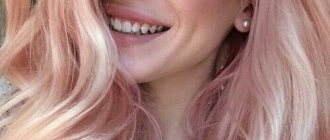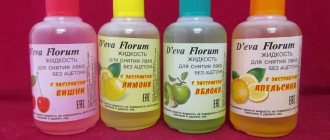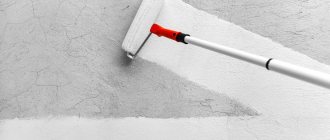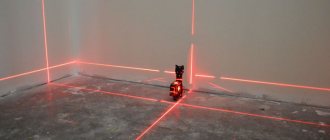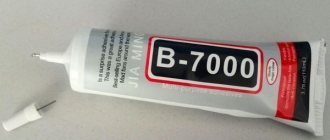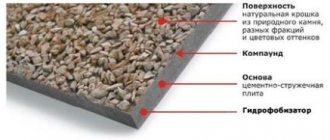Modern interior design is full of original shades. The range of finished products does not always contain the required halftone. The color mixing table will help you get the desired result at home. The information will be useful not only when renovating an apartment. Knowledge about mixing colors is useful to a wide range of people: novice painters, auto repair workers, decorators and other creative people.
Mixing experiments: what you need to know in advance
The world around us is filled with a wide color palette, but all the colorful splendor is based on three primary colors: blue, red and yellow. It is by mixing them that the desired halftone is achieved.
To get a new shade, use base colors in different proportions. The simplest example of how to get green. The answer is extremely simple: mixing yellow dye with blue. A visual table of primary, secondary and transition colors obtained by mixing is presented below:
This table will help you understand that the question of how to get yellow is in itself incorrect. It cannot be achieved by combining other components, since yellow belongs to three basic tones. Therefore, when the need for yellow arises, they purchase a ready-made dye or extract the pigment from natural products, which is not entirely advisable.
The same initial colors, taken in different proportions, when mixed, give a new result. The larger the volume of one dye, the closer the final result after mixing will be to the original shade.
Experiments must be carried out taking into account generally known rules. If you combine chromatic colors that are close to each other on the color wheel, after mixing you get a paint with a pronounced chromatic hue, although it does not have a pure tone. The combination of dyes located in opposite directions leads to the formation of an achromatic tone, in which a gray tint predominates. The chromatic circle will help you navigate the optimal combination of colors:
Attention! Mixing dyes does not always lead to a lasting result. Some paints, when combined, provoke a chemical reaction, due to which the decorative coating subsequently cracks. There are cases when the desired background turns gray or darkens over time.
For example, if you take red cinnabar and lead white, the resulting bright pink color will darken after some time. It is advisable to take the most limited amount of original paints to obtain the desired tone. When mixing, their compatibility must be taken into account. For example, oil-based dyes are sensitive to solvents. It is better to immediately exclude materials that darken or quickly fade. A table of combinations that should not be used will prevent errors in the creative process:
Adding dyes
Place one polish mixing ball in each empty bottle. Insert a miniature funnel into the neck of the container.
Scoop up the required amount of dye with the tip of a popsicle stick and pour it into the funnel. You can use one pigment or create combinations of different colors.
If you want to make a polish with a bright and rich color, then you will need a large amount of pigment. In this case, it is better to use a teaspoon. Fill it a quarter or half full with dye and pour the substance into the funnel.
Remember that cosmetic dyes easily stain your hands and surfaces. Sometimes it can be difficult to scrub them off. Therefore, you need to pour pigments into the funnel very carefully.
Rare shot: Viktoria Isakova showed her grown-up daughter from Yuri Moroz (new photo)
Women's jeans: before you buy them, you need to pay attention to one detail
Why French children behave well: eight ways to raise them
If you are using mica or glitter, add it to the funnel after the dye.
Variety of shades of red
Red consists of a trio of original colors that make up the base. Therefore, even a minimal set of paints cannot do without it. However, the question of how to get a red color when mixing paints sometimes still arises. This happens because magenta is involved in printing, so creative searches for how to get red are natural. Everything is solved extremely simply: to obtain natural red, yellow is mixed with magenta in 1:1 volumes.
The color scheme of red is diverse, so there are many combination options:
- An extremely popular question is how to get a crimson color. The initial colors for the mixture are red and blue in equal proportions; introducing small amounts of black or white color will help to vary the shade of crimson.
- There are several answers to how to get brown. The easiest way is to combine red and green. Since green itself is the result of mixing yellow and blue, then, accordingly, a combination of three primary colors will help to achieve a brown background. More detailed ways to achieve shades of brown are presented in the diagram:
- Pink can be obtained by combining red with white.
- If you mix 2 portions of red color with 1 part of yellow paint, you will get scarlet. To get orange, you need to increase the volume of yellow. Depending on the desired shade, orange is created by mixing pink paint and yellow dye.
- You can achieve burgundy in different ways. The easiest one is to add a drop of blue paint, because red itself is dark. A similar result will be obtained by introducing a little yellow and a drop of black paint into the red color.
- Mixing red and pink dye allows you to achieve a softened red undertone; white color will help increase the result.
- Combining red with violet in a 3:1 ratio results in a dark red tone.
Comment! A beautiful purple color cannot be obtained by combining violet with red. The only way to achieve a bright shade is to find red paint without yellow impurities and mix it with blue.
The variety of shades of red is demonstrated by the next circle. It is worth noting that adding white colors to any mixture leads to lightening of the tone, and black ones to darkening.
The table below will help you understand the names of shades of red:
Consumables
To make homemade colored nail enamel, you will need a transparent base (base) for the varnish, as well as cosmetic oil dyes. You can choose the color of the pigments to suit your taste. You can use one color of dye or mix several shades.
If you want to make a shimmering polish, then prepare pieces of cosmetic mica or glitter.
It’s good to wash often: myths about shampoo and hair care that only harm
Smooth and fresh skin: dermaplaning, or why a woman needs to shave her face
If there is little snow, there will be no harvest: December 16 is Ivan the Silent Day
You will need the following containers and tools for work:
- empty bottles for varnish with a cap and a brush;
- balls for mixing varnish;
- small funnels the size of the neck of a bottle;
- popsicle sticks.
Variations of blue
An equally rich palette of shades is obtained by mixing with blue dye, which is part of the basic triad. Therefore, its presence in any set is mandatory. However, even a set of 12 colors sometimes does not meet the needs for a true blue tone. The reason is color variations. The classic tone is called royal, and on sale it is often replaced by ultramarine, which is characterized by a bright dark shade with a slight presence of violet. Therefore, the question of how to get blue no longer seems absurd. The way out of this situation is to add white to the base color in a ratio of 3:1. Blue is obtained in the same way, only more white is used when combining.
An interesting color of blue with a moderately saturated result is obtained by combining darkish ultramarine with turquoise.
The following recommendations will help you figure out what colors you need to mix to get shades of blue:
- Equal volumes of blue and yellow dye will give a dark blue-green tone. The introduction of white promotes some lightening, but the brightness is reduced. The reason lies in the combination of three components, and the more there are, the duller the color turns out.
- To get a turquoise color, mix cyan blue and add a slightly smaller amount of green. This shade is also called aquamarine.
- The color obtained from equal volumes of blue and light green is called Prussian blue. When white is introduced, the saturation decreases, but the purity of the hue does not go away.
- Blue and red colors in a 2:1 ratio produce blue with a hint of purple. The resulting color is lightened by adding white.
- Mixing equal parts of blue and pink magenta will give a royal blue, which is characterized by unusual brightness.
- Blue can be darkened by mixing it with black in a 3:1 ratio.
A table with the names of shades of blue will be an assistant in mixing experiments:
Variety of green
The original green is usually presented in all sets; if the required dye is not available, there are no problems obtaining it. Pairing yellow with blue gives the desired green background. But any direction of creativity, be it painting, interior design or another option for decorating objects, requires a wide palette of green. The basic principle of all experiments is to change the proportions of the base colors; white or black dye is used to lighten or darken the background.
Next we will talk about mixing options and the results of the experiment:
- The combination of blue and yellow with a small addition of brown represents khaki. Green with a small amount of yellow forms olive.
- Traditional light green is the result of mixing green and white.
Adding yellow or blue will help regulate warmth. ?Attention! The quality of the starting components affects the saturation of the green color. The more intense the base tones, the brighter the blending result will be. - A yellow-green effect can be achieved by combining yellow and blue in a 2:1 ratio. The inverse proportion will result in a blue-green tone.
- Dark green color is achieved by adding half the amount of black.
- A warm light green background is formed from a mixture of white, blue and yellow paint in a 2:1:1 ratio.
The circle demonstrates a variety of green colors. The base dye is located in the center, followed by the additional component, and then the result of mixing. The last circle is experiments of the resulting tone with the addition of white and black dye.
The next table will become an assistant when conducting experiments.
Henna and cocoa color. How to get chocolate hair color using henna and basma
Women are fickle natures. Today we want to be a red-haired beast, and tomorrow a chocolate beauty. And what after tomorrow?.. Periodically, once a year, I am visited by the desire to get a brown (dark chestnut or chocolate) shade of hair. And then I buy a package of basma for henna. This time I came across Indian henna and Indian basma Phytocosmetic.
Since I have been dyeing my hair with henna for almost 4 years, the pigment is quite firmly attached to my hair. Usually my mother does my makeup, but... this time for some reason I decided that I could handle it myself. I shouldn’t have decided so. A little about my hair: moderately thin, not thick, short, not damaged. My hair is naturally light brown, wavy, and of normal type. The scalp is prone to dryness and flaking. For some time now I have decided that I am tired of growing my hair long and that I am more comfortable with short hair. And I asked my husband to cut my hair. (It was in the evening, there was nothing to do...) Next time I plan to go to the salon and trust a professional. Now let's take a closer look at the henna and basma that I bought.
Henna Indian Natural Phytocosmetics.
Volume: 125 g Price: 85 rub. Packaging: cardboard box, inside of which there are 2 foil bags with henna.
Texture: finely ground powder, yellowish-greenish in color.
Basma Indian Natural Phytocosmetics.
Volume: 125 g Price: 95 rub. Packaging: cardboard box, inside 2 foil bags with basma.
Texture: finely ground powder, light green in color.
Application of henna and basma: Stage 1 - I take 2 spoons of henna and 2 spoons of basma, pour them into a plastic container. I fill it with hot water (90 degrees). Usually 200 ml of water is enough for me. I stir thoroughly so that there are no lumps left.
Stage 2 - add 1 teaspoon of oil to the finished mixture (in this case I have peach oil).
Stage 3 - while the coloring mixture is cooling, I go wash my hair with shampoo, without using conditioner. Stage 4 - let's start painting. Henna was applied with a brush, strand by strand. Girls who dye their hair themselves, you are my heroines!!! It turns out it's so difficult. I’m used to sitting relaxed and not straining when my mother paints me. And then I had to do everything myself... I stained everything with henna (both the bath and myself). And considering that I am myopic, this is a feat on my part. Blind painting. I did it! I dyed my hair! She put a plastic bag on her head and went to do household chores.
After 2 hours, I washed off the henna with warm running water. Apply a generous amount of conditioner to all hair, including the roots. Massaged it and washed it off. And this is what I got.
I'm happy with the result! But next time I will resort to the help of my mother. That's all! Goodbye! I wish everyone gorgeous hair!
Other shade combinations
The color kaleidoscope is not limited to combining basic dyes. For example, gray is often required. Different proportions of white and black pigment will give a wide achromatic palette.
How to get ivory color? The base color will be white, with ocher and dark brown gradually added in small portions. Ocher promotes the appearance of warm tones, increasing brown leads to a cold background.
Another table shows the many mixing options:
How to get black? By combining cyan, yellow and magenta. They are not always available, so three basic dyes will help. Combining green with red will also give some semblance of black, but it will not be pure.
How to make gray by mixing colors
Hairdressers who use highlighting techniques are well aware of the possibility of obtaining an ashy color by combining white and black. Indeed, the easiest way to make it is to dilute a drop of black with a certain amount of white. In watercolor, gray can be made even easier: dilute black paint with water. The less white in the mass, the darker the gray turns out.
Mouse tone can also be cold or warm. This is due to the second method of creating it - mixing dyes of opposite meanings. For example, gray is prepared by combining green and red, and since the latter is warm, the resulting color will also not be cold. To give ashen a “frostiness” without yellowness, it must contain blue notes. Adding brown, red, and beige will help “warm” the tone.
It is not recommended to mix paints of different types or from different manufacturers. Their brightness and density indicators can vary greatly, which will affect the quality of the result. Any ready-made dye can be made lighter or darker by dropping a little white or black, respectively.
